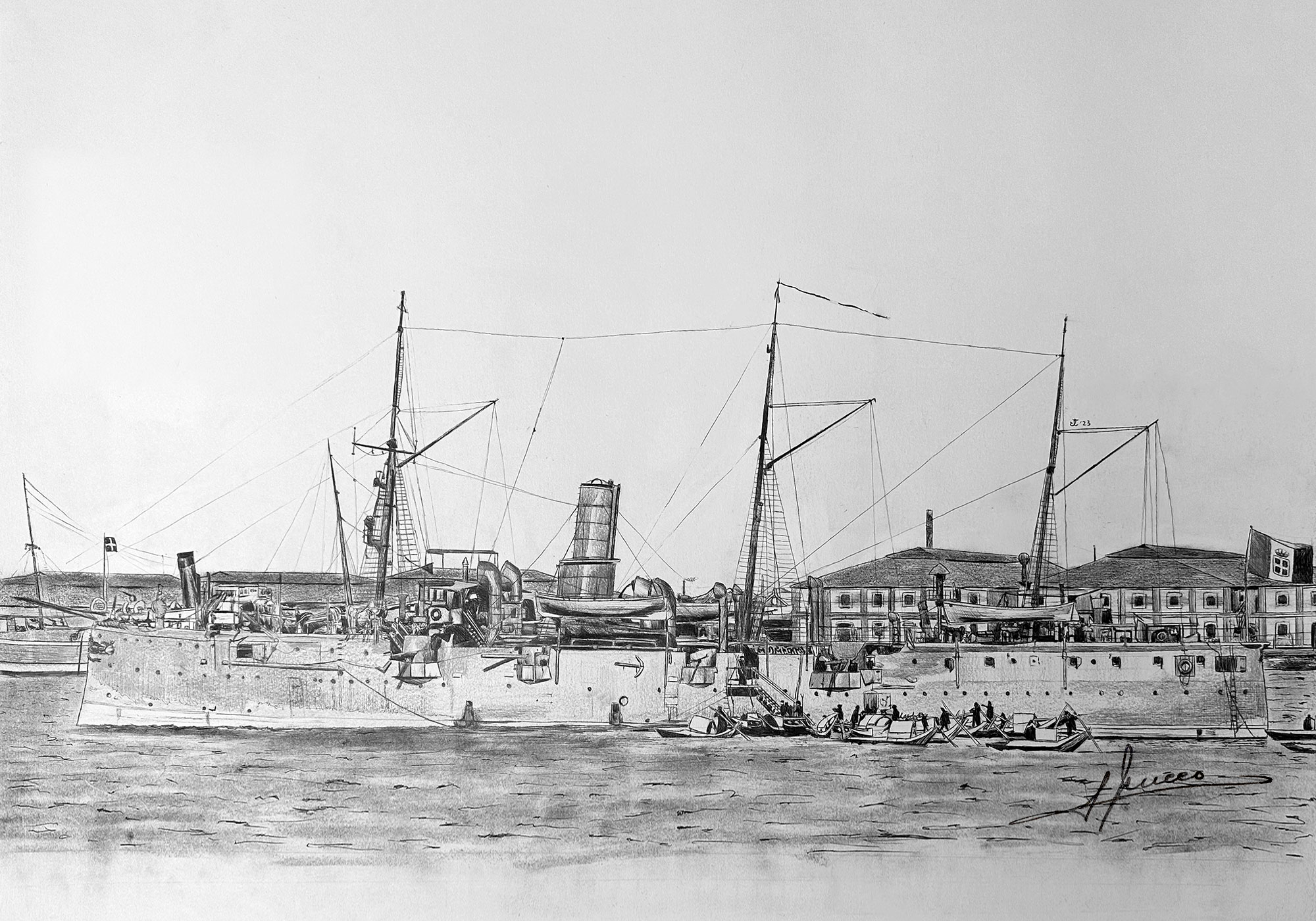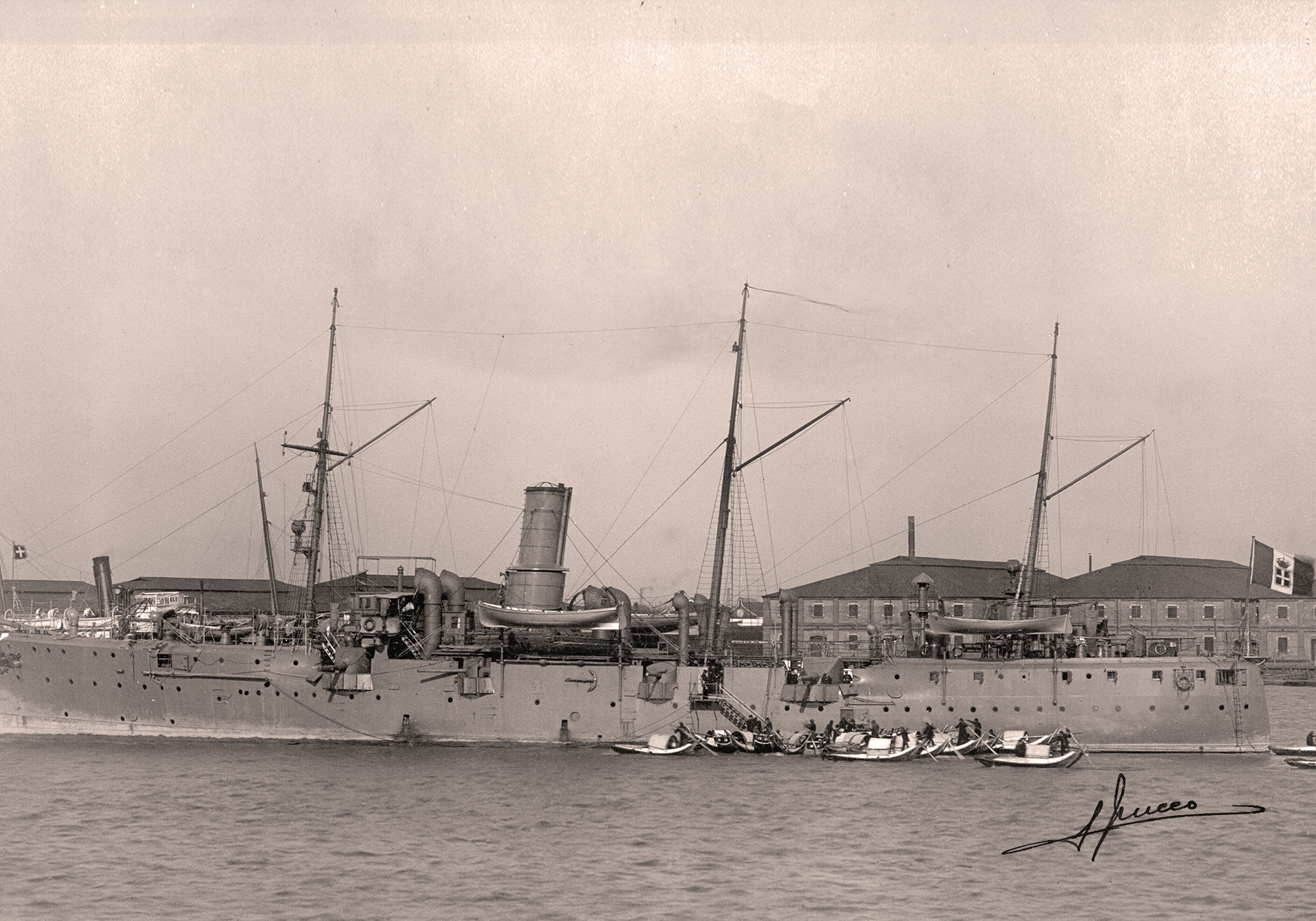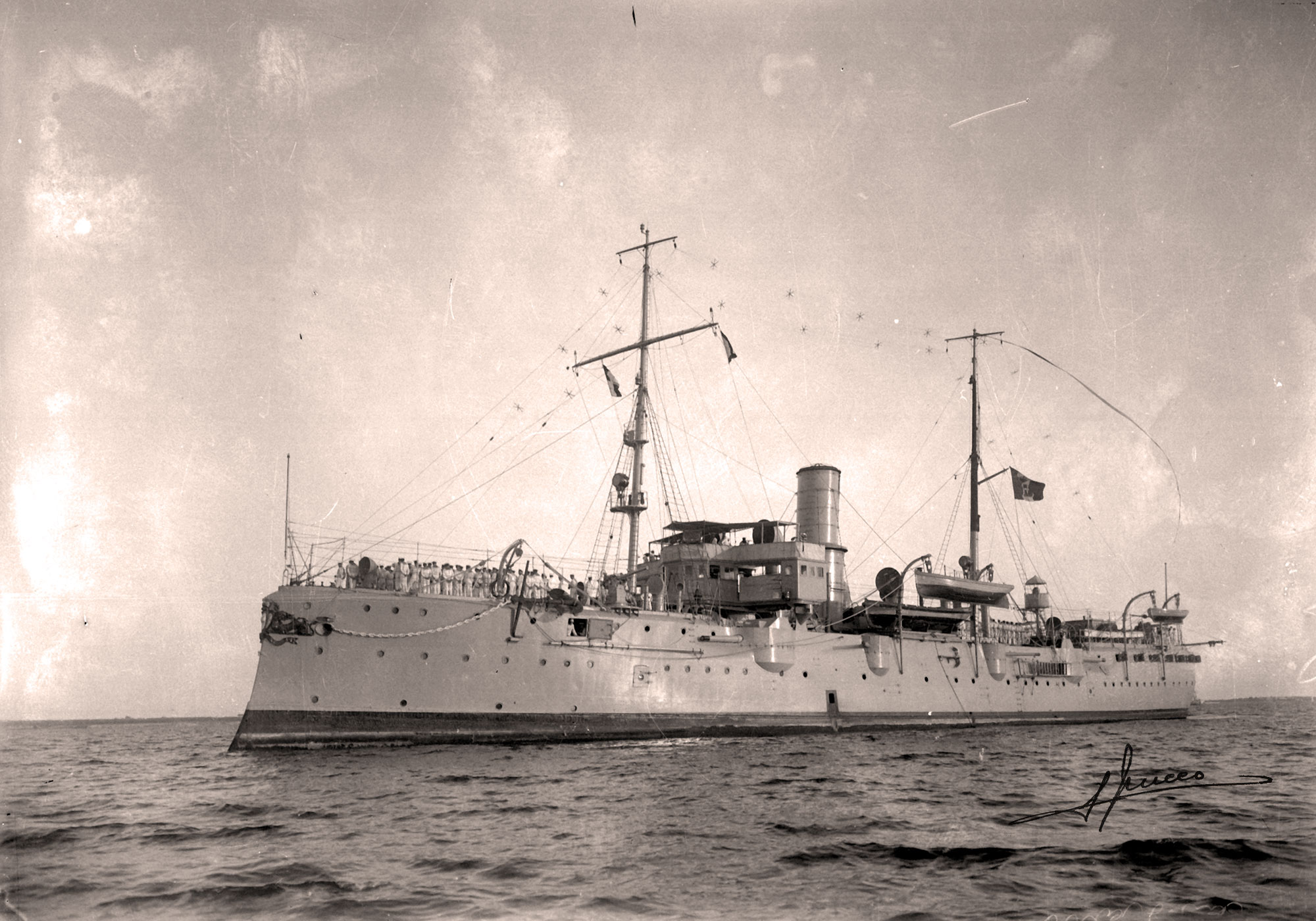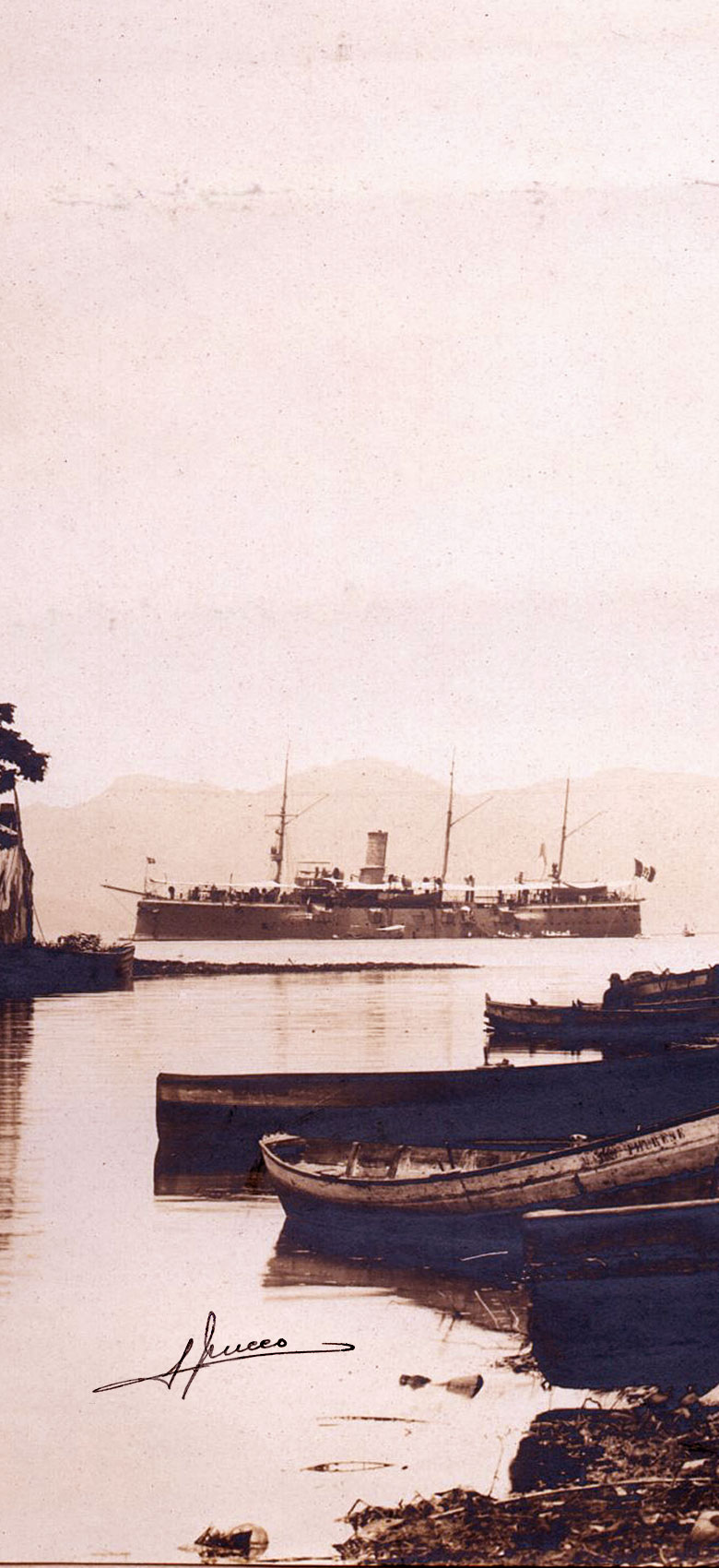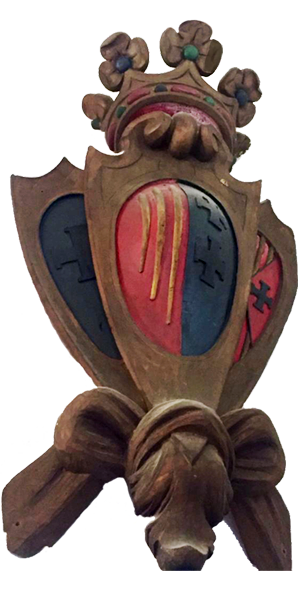
“La vida no es la que uno vivió,
sino la que recuerda, y cómo la
recuerda para contarla” [1]
This research project was the result of a coincidence, as often happens when you come across historical documentary evidence which has never been published before. Events are hardly significant, more or less obvious: everything started when an old dusty chest was found in the attic of my ancestral home. Inside, placed with great care and elegantly bound, there were three handwritten holographic diaries.
They narrate the first years of the life of a seaman, a sailor: Admiral Carlo Trucco, ensign at that time, recently graduated at the Italian Royal Naval Academy of Livorno, in other words my paternal grandfather.
It is the beginning of the 20th century and the story reported in the diaries is about no common person, but it is about the life of a naval officer, who not only had the privilege of taking part in the great events which deeply marked the history of our country during that period, but he was also both witness and protagonist of events involving far away countries and civilizations.
The first manuscript describes the forth Ocean campaign of the Regia Nave Calabria, it starts on 16th January 1909 and ends on 20th February 1911. The second diary recounts the author’s period of navigation on the Regia Nave Regina Margherita: from 11th April to 16th December 1909. In the third manuscript lieutenant Carlo Trucco is on board the Regio Incrociatore Coatit and takes part in the Italo-Turkish War: the narration starts on 10th July 1912 and ends on 15th March 1913. From 15th April to 15th May1913 the manuscript deals with the author’s experience on board the Regia Nave Volta. Finally, the last diary describes the author’s first period of command at sea, when he boarded the Regia Cannoniera Marghera as a captain: from 17th May to 15th September 1913.
Destiny sometimes seems to intrude into our lives. As if by magic, those diaries reached my hands more than a hundred years after their drafting, almost as if they had been written in order for me to find them, in accordance with an unavoidable plan.
Since I had already been involved in transcription and translation of manuscripts, although of a different nature, I immediately realized I was in possession of documents of great relevance. Therefore I felt obliged to bring to light that historical evidence in order to contribute to an exhaustive reconstruction of the history of the Italian Royal Navy in the years before the Second World War.
My decision to create a website and publish the three diaries comes both from a desire to make these unique documents available to all the people interested in or fond of the history of the Italian Royal Navy and from my belief that the reconstruction of our historical memory must come to terms with the potentialities of modern technology.
The idea first came to me a few years ago, when I first mentioned it to my director Maurizio Mamiani. At the beginning we meant to publish a book, an anastatic copy of the manuscript. Then a series of events prevented its realization. Now that my classical studies are only feeble memories and the years of academic engagement have gone by, it is time to realize that project.
Conscious of not being competent in this particular historical context, I initially thought I had better not risk any adventurous interpretations and therefore I will start this research program with the transcription of the manuscripts. The first document I will analyse is the chronicle of the forth Ocean campaign of the Regia Nave Calabria.
The account of the navigation opens with a short introduction in which the author gives a detailed description of the features of the ship he is on, its peculiarity and the use of its weapons. Then the real chronicle of the voyage begins. The narration of the young ensign starts with the day he goes on board. He describes the various places where the ship docked and the sequence of military training, by illustrating his words with precise drawings and maps and making comments about the events which took place both in times of peace and in wartime. Everything is richly documented by photographs. The author’s education, his knowledge of warfare and his deep critical attitude make him a privileged spectator. Through his testimony, his experiences and his observations we will be able to recall and understand a “little page of history”, which will prove fundamental for a deeper and more complete interpretation of the “Great History” of the Italian Royal Navy.
The incidents recollected in the manuscript are not only related to the dimension of life on board, but the narration of the voyage develops on a second level, which is parallel to temporal events and which transcends the simple chronicle of the voyage itself. It deals with the area of thought, the itinerarium mentis, the mental process of the narrator. And we all know that the spiritual dimension is not foreseeable at the moment of departure, it will occupy the whole length of the voyage and all the time of the narration. And so starts my journey through the vicissitudes of Ensign Carlo Trucco.
As far as I am concerned, this research represents the “route” towards the rediscovery of a man who, although he passed away when I was a small child, has nevertheless managed to consign the testimony of his extraordinary existence to me. His voyage has now become mine, too, and perhaps, if you find enough patience to read about us, it will become yours as well.
Finally, just a brief remainder of all the people who have made the realization of this project possible. First of all I cannot forget professor Maurizio Mamiani – even if he is unfortunately no longer with us – who, during the long years of our collaboration, has always encouraged me to complete my research. However, my immeasurable gratitude goes to the memory of my grandfather, who left me such significant testimony: it does not only represent a page of history, but it is, primarily, a life lesson, initially shared by my father and now passed on to me. Lastly, a special thankyou goes to my husband Stefano for his precious advice and for patiently assisting me during the drafting of the texts.
Emanuela Trucco Mineni

[1] Gabriel Garcia Marquez, Living to Tell the Tale (Vivir para contarla as translated by Edith Grossman published in 2003).
“Life is not what one lived, but what one remembers and how one remembers it in order to recount it”
